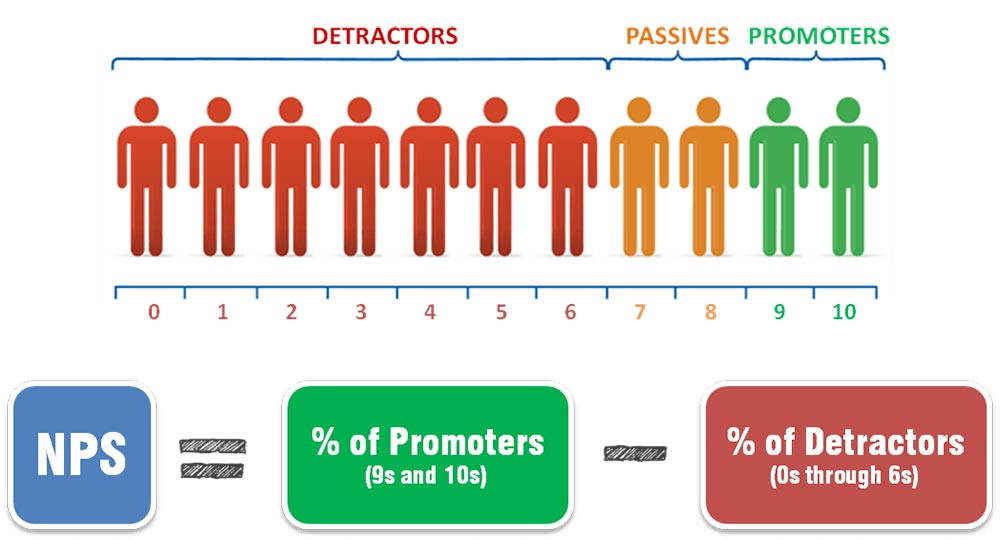OTT platforms have gone above and beyond to break the chain of waiting for the next episode in anticipation, and we have an entire world of series and movies in our hands. Netflix is able to provide an on-demand service that is different for each viewer because of its investment in algorithms and audience statistics. There are currently “33 million different versions of Netflix,” according to its director of global communications.
Everything is tailored to you based on your Netflix experience, including the recommendations, the order of search results, and even the title cards you view. When competitors like Amazon Prime and Hulu continue to struggle with churn, Netflix succeeds in this way. Even in the world of OTT platforms, customer engagement is crucial to avoid churn. Netflix has 90 million customers and has only a nine percent of churn rate, hence, it is declared the queen of personalized customer engagement.
The key takeaways here are:
- There is a dire need to measure customer engagement. Given the volume of data, we can currently use for marketing, personalization is probably the future of content engagement.
- In competitive markets, putting the needs of the customers first is a success factor.
- Personalization significantly reduces customer churn.
Every successful business, organization, or brand does an in-depth analysis of its customer profile data. You have to have access to your customer’s personal details to give them a personalized experience. There has to be a means of attributing and observing them for rewarding brand interactions, and you have to know your customers to reward them in a way that means the world to them.
Data is the driving force for marketing success, and with the help of the right customer engagement tool and strategy, gathering substantial data across all channels becomes an easy trail to tread.
Why Is Customer Engagement Important?

Customer is the king for any business, if you want to run a customer-centric business, then you need to take care of the needs and demands of your customers. Already engaged customers to pay off facts are:
- Attracting a new customer is five to twenty-five times more expensive than gripping an existing one.
- If there is a five percent increase in customer retention then it is equal to a 25 percent and above increase in profit.
- More than 43 percent of customers won’t hesitate in paying more for greater convenience.
High CLV (Customer Lifetime Value) is not the sole benefit of having loyal customers. They are also the primary promoters for your business, bringing in new customers through recommendations. Additionally, to recommend a business, you must first be happy with its services. Any favorable review or comment on social media is helpful for your company.
92% of consumers trust recommendations from friends and family more than any marketing efforts, and 70% of people believe the reviews they find online, according to a Nielsen survey.
How Does Customer Needs Lead To Customer Loyalty?

Did you know that consumers are 80% more likely to prefer your brand over rivals when you have a high-performing loyalty program?
In a recent episode of CleverTap Engage, the podcast and video interview series which showcases top CMOs who accomplish meaningful customer engagement, where Mastercard’s CMO Raja Rajamannar said, “brands should be loyal to their customers, not the other way around.”
Mastercard is the epitome of the future of customer loyalty. To provide their clients with the ease and security of a single payment system, available at their fingertips, they have invested in initiatives like Masterpass, a digital wallet service. Mastercard has successfully positioned itself as a partner rather than merely a supplier thanks to its approach to enhancing customer engagement.
Mastercard was able to reach a paradigm of customer loyalty because it took care of its customers’ rational and emotional needs.
The term “rational needs” refers to how a buyer evaluates the worth of a product. For instance, a consumer may be considering the benefits a loyalty program may offer. A rationally loyal customer chooses carefully when to begin a relationship with a brand.
“Emotional needs” are seldom expressed and always expected. They completely rely on feelings over facts, and an emotionally loyal customer will stay loyal to the brand, service, or product even if there are better alternatives available in front of them.
Satisfying emotional needs of protection, security, and acceptance strengthens both the brand and customer relationship. Consumers try to look reasonable and rational by keeping their emotional needs at bay. The holy grail to building a lasting relationship with the customer is to take care of their emotional needs first before diving into their rational needs.
How To Measure Customer Engagement?

When it comes to drilling into the treasure trove of data to measure customer engagement, there is a need to get a hawk-eye view of how customers interact with your brand. Customer engagement needs to have a goal, just like every other business vertical. Brands should reflect on questions like, “What are we trying to accomplish?” What are our objectives? You may use this to gauge how well your campaign is doing.
Some metrics can help you determine the effectiveness of your customer engagement approach.
Net Promoter Score (NPS)

When we go to a restaurant, after paying the bill we are handed a feedback form, which interestingly only two percent of the people around the globe fill out and submit. The feedback form contains only one question, “How likely is it that you will recommend our restaurant to your friends and family?”
The Net Promoter Score (NPS) is a metric used to evaluate customer loyalty or, more specifically, the likelihood that customers will spread the word about your business. Understanding how well your product meets the needs of your customers depends on this metric.
Customer surveys are the most used method for calculating NPS. Customers are frequently asked to assess their interactions with brands on a sliding scale of 0-10 (0-6 are the detractors, 7-8 are the passives, and 9-10 are the promoters).
Detractors are the customers who are unhappy with your products or services or whose expectations were not met. They bring forth opportunities for you to take note of their feedback and upgrade their products and services based on their ratings.
Passives are the customers who are neither happy nor unhappy with your products or services.
Promoters are the customers who get emotionally invested in your products and services. They will seldom complain, however, always provide you with suggestions to enhance your services to make a difference.
How to calculate NPS?
The general NPS standard classifies a positive score or anything higher than 0 as “good,” +50 as “outstanding,” and +70 as “world-class.” You must subtract the proportion of people who are eager to promote your product from the proportion who are not to calculate NPS.
NPS = % Promoters – % Detractors
If you have 70% Promoters and 10% Detractors, your NPS score is 60%.
Customer Satisfaction Score (CSAT)

You can determine the effectiveness of a knowledge base article by asking a single satisfaction question to a consumer after they have finished reading it. After customer care or customer education touchpoints, the customer satisfaction score may be used. When attempting to gauge customer satisfaction, whether it be during the purchasing process, when using the product, or when interacting with your content, CSAT surveys can be used.
For example, you can ask, “How would you like to rate your experience with our service?” Then add a numbered scale with options:
- Very Satisfied
- Satisfied
- Neutral
- Unsatisfied
- Very Unsatisfied
How to calculate CSAT?
One can get a composite Customer Satisfaction Score (an average rate) by dividing the total number of satisfied customers (the highest values are 4 and 5) by the total number of survey responses. Results are sometimes provided as percentages, with 100% denoting total satisfaction.
[Number of satisfied customers (4 and 5) ÷ Number of survey responses] x 100 = % of satisfied customers
Customer Lifetime Value (CLTV)

The estimated amount of money a customer will bring into a business over the course of their relationship is known as customer lifetime value. Customer lifetime value is concerned with how much a customer spends with your business, whereas customer retention focuses on how to keep consumers loyal.
Customer lifetime value assists businesses in identifying the most valuable customer segments and ensuring that the cost of acquiring new customers is profitable. It has been demonstrated that elevating customer involvement and satisfaction has a favorable impact on lifetime value. Customer engagement initiatives like loyalty rewards, for instance, help to retain and upgrade consumers while helping to reduce churn through excellent customer care provided by customer support staff.
How to calculate CLTV?
You must first determine life span value in order to calculate CLTV: Multiply the average selling value by the number of transactions the user completed as well as the retention duration to get there.
LTV = Average Purchase Value x Total Transactions x Retention Time.
The CLTV can then be determined by multiplying the LTV by the profit margin.
CLTV = LTV + Profit Margin
Churn Rate

The percentage of a company’s total customers that discontinue doing business with it during a predetermined time period is known as the customer churn rate. Churn rate is an effective tool for determining what a brand is doing well and where it needs to improve when compared to other important customer engagement indicators.
Churn rate may be observed annually, quarterly, monthly, or weekly, depending on the nature of the firm. Fast-growing businesses may even review this data on a daily basis due to their user bases’ erratic and severe fluctuations. Customers come and go, despite the fact that all businesses aim to have a loyal client base and a zero churn rate. However, that doesn’t imply churn isn’t important to monitor.
There is no one-size-fits-all method for evaluating customer engagement, however, there are a few key steps you can take to keep track of your progress. It could initially appear a little overwhelming, however, with a few doable steps, you can measure it with ease. A more focused action plan can assist raise customer engagement and satisfaction, which boosts ROI. Whether a business is new or established, consumer engagement is essential. Metrics are crucial for tracking the development of your business.
https://www.snipp.com/blog/customer-engagement-examples
https://www.verfacto.com/blog/marketing/how-to-measure-customer-engagement/
https://helpcrunch.com/blog/customer-engagement-metrics/#What_is_customer_engagement
https://clevertap.com/blog/customer-engagement-examples/#customer
https://survicate.com/customer-satisfaction/importance-customer-satisfaction/
https://mastermessaging.com/wp-content/uploads/2019/08/CustomerEngagement.jpg
https://www.futureproofinsights.ie/wp-content/uploads/2021/03/image-3-1024×569.png
https://miro.medium.com/max/1047/1*HMggGhaLDH-S3OWjhcQoTQ.png
https://pwpblog.wpengine.com/wp-content/uploads/2021/10/Customer-lifetime-value.jpg
https://d1eipm3vz40hy0.cloudfront.net/images/AMER/calculate-customer-churn.jpg
Written By: Jimmy Jain
Edited By: Afreen Fatima
Society of Design Thinking Professionals









